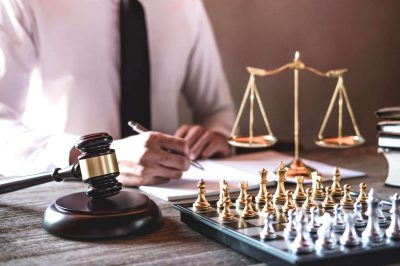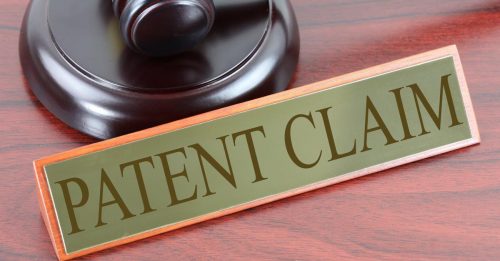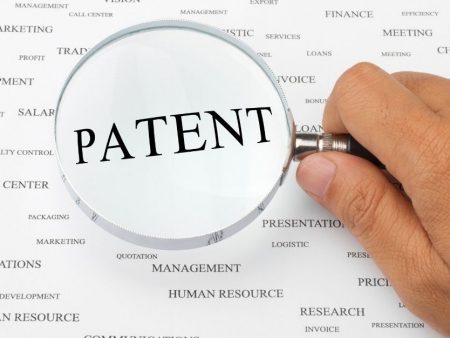
Explore Potential Monetisation opportunities

Decode real value of your diverse profolio

Only 5 business days turn-around time

Leverage our diverse industry experience

Our aim is to maximize your business potential by exploring the value of your patents and identifying additional patent licensing opportunities. Before you take that critical decision about monetizing patents, we help you understand the potential of that patent. It may be worthwhile to license a patent instead of buying or selling it. We leverage our experience in corporate strategy planning and technology consulting, to carefully analyze your portfolio and recognize potential technologies or patents, where profits can be maximized.

Infringement analysis identifies third-party products that read onto your most robust patents. bIt helps to look out for potential infringers or organizations operating in a homogeneous technology area and analyze their products with regard to the claims of your Patent. We dig deep into documents such as whitepapers, product datasheets, standards, videos, etc., to identify relevant products standards and prepare claim charts as evidence for infringement so you can be free from all the burden.


Detailed claim charts to cite evidence for an infringement.
We help you make that critical decision about Patent licensing, acquisition or sale, by carefully analyzing the patent claims, followed by a detailed analysis of relevant products for infringement. We prepare clear Evidence of Use (EOU) claim charts to indicate how each patent claim element reads onto the product features with element-to-element mapping.

Leverage our diverse industry experience
We work for you and your team to strategize patent acquisitions and cross-license opportunities. We will evaluate your business SWOT analysis to identify which technologies and patents are the best fit to strengthen your current portfolio.

As a patent owner, you profit (hold the exclusive rights and ownership) from your idea by licensing a patent and collecting royalties from sales.

The invention of a product or design can be expensive. It also carries high risk, but that’s where Patent licensing comes in; when you approve your intellectual property rights to another party (i.e., someone who doesn’t manufacture the products), they will take responsibility for all aspects related to making those items risks as well as rewards; this means less concern on what happens, for example, if something goes wrong because there is no “manufacturing” involved with any potential problems at hand.

Patent licensing/license agreement can be an excellent approach to avoid high expenses, time-consuming difficulty, and pointless legal action. This method allows you to keep complete ownership of your intellectual property while still allowing competitors access in exchange for them agreeing not to sue or prosecute you for any alleged infringement. For example, for “YOU, We investigate how a good deal could save both parties time and money.

You are not obligated to sign away your intellectual property rights for the rest of your life. Instead, you can put a time limit in the license while licensing a patent, and when it expires, you reclaim sole ownership of any creative work or ideas made possible by these terms.

Not all inventors/entrepreneurs /industries can produce a product or design on a large scale. However, Patent licensing is an effective way to introduce your invention into other markets and lead distribution across international borders for entrepreneurs who are starting with their business ventures in this new economy where competition has never been greater than it currently is right now
A patent license is an agreement that allows someone else commercially makes use, and sell your invention for a specified period. But this does not give the ownership of the Patent. The patent owner of the invention must grant them permission to do so in return for either single time payments or ongoing royalties depending on what option they choose when entering into this type of contract with other companies who have patents as well Licensing deals typically involve an amount from both parties -one side receiving funds while another performs some service like providing technical support before getting paid back through their business transactions based off how much was made off each sale/use, etc.
These are steps you can take to make sure your invention is licensed. First and foremost, research the person who will be using it before licensing them with an agreement that guarantees the protection of intellectual property if any problems arise later down the line. Secondly, contact organizations like The United Inventors Association for support if necessary.
It seems like a small thing, but doing safety practices such as these could save you from potentially expensive lawsuits or further hassle altogether.


For the inventor, licensee, owner, and entrepreneur, it is essential to evaluate your patent license options carefully. However, do not make a mistake when license the patent- the wrong decision can cost you time and money in legal fees.
To avoid costly mistakes, here are some things that might help you think about before making any decisions, contact attorney or IP lawyer, Study Terms of Use and Privacy Policy Search Latest articles Infographic.
Licensing agreements should be negotiated, and an attorney or IP lawyer should draft patent licenses with strategies for both the licensor and licensee. The deal will mention any upfront payments, amount of royalties, and any future potential infringement issues.
You can establish the scope of the license to be negotiated. For instance, you can license all of your patent rights or limit these rights to specific areas, such as manufacturing or sales.

We will Answer your Questions, Scope your Project and Ensure Quality Results
Licensing the Patent can be less profitable given that when you make your creation available in a market yourself, it's possible to increase profits significantly.
When you license your Patent, its success depends on who gets to use it.
The licensor can, in turn, be your competitor One option for those who wish to license their work is that they may cannibalize the sale of your products and earn less from royalties. Risks and Limitations of licensing your patents.

Exclusive License: Exclusive licences are a way to protect your intellectual property and prevent others from exploiting the rights. An Exclusive License means that no one but you can exploit these properties, which also includes those who would like their own license as well!
Non-exclusive License : This contract can be used to issue a patent license, and everyone participating in its creation retains custody of it. They will also get the chance to take this invention to market with them.
Sub Licenses: The principal of Patent licensing is to grant rights for making products through the process. In other words, they can award licenses on behalf of third parties with competitive edges since they may be able make it better or have access that’s otherwise not available elsewhere.
Cross-Licensing: This is the time when diverse organizations and creators may collaborate. This procedure necessitates the invention receiving backing from other products to enter the market so that they can license their patents or trademarks outright and, if necessary, give marketing aid for a limited period of time.
Compulsory License: Compulsory Patent licensing is a legal agreement that allows someone else to manufacture patented products or processes without the patent owner’s permission. Trade-Related Aspects of Intellectual Property Rights that is formed under WTO regulations.
Voluntary Licensing: Voluntary Patent licensing is an act of goodwill towards society. Patent holders/patent licenses may, at their discretion, grant to other parties on an exclusive or non-exclusive basis the right to manufacture and distribute pharmaceutical products.
There are companies with which will help you to obtain insurance against the risk of patent infringement that may help fund litigation costs and, if applicable, damages. You can also get coverage in case your company is issued by another party for infringing on Its IP.
A partially- exclusive license allows multiple companies to obtain rights to manufacture or trade a government invention but only in specific specified commercial applications or certain defined geographic locations.
There are many types of patent infringement. However, the common are listed below:
Direct Infringement: If you make, use, sell, try to sell or import something without obtaining a license from the patent holder then it is considered direct patent infringement. You can be sued for damages and an injunction that stops you from infringing further.
Indirect Infringement: Indirect infringement is when one company contributes to or induces another company to infringe on a patent. This can happen even if your company isn\’t directly infringing on the patent itself. You could be held accountable for contributing to or inducing others into infringing on patents that are owned by other companies!
Contributory Infringement: Contributory infringement is when a part that aids in creating a patented item is purchased or imported. To prove contributory infringement, a person must show that the component’s primary use would be to create a patented article. A generic item that has other benefits doesn’t qualify in proving contributory infringement.
Induced Infringement: It’s a patent law term that means someone or something is helping another person or company to infringe on a patent. This can be done through instructions, preparing instructions, and more. It appears through offering instructions, preparing instructions.
Willful Infringement: Willful infringement is a serious offense that can lead to severe penalties. If you’ve been accused of willfully infringing on someone else’s patent, it’s important to take action immediately.
Literal Infringement: Literal infringement is a legal term that refers to the direct correspondence between an infringing device or process and the patented device or process. In literal infringement, there must be a direct correspondence between the infringing device or process and the patented device or process. This means that if someone has created something similar enough to your patent, they might have infringed upon your rights.
The doctrine of Equivalents: Even if the device or method doesn’t precisely infringe a patent, a judge might find in favor of the patent owner.
Evidence of Use (EOU) Chart helps you to:
Recognize potential infringement of existing patents. If you are selling patent assets, then proof of patent infringement can strengthen the terms of the sale.
Identify vertical technology areas. An A-lots of technologies use common subsystems or techniques of getting their means. So, provisional patent and product literature studies seriously help in identifying the right target companies. We at PatentsKart, work closely with you during this significant phase to make out the number and kind of technology silos that set up the scope of your study.
Evaluate potential patent infringement analysts; work with your specialist and counsel to analyze your patent portfolio and make out the candidates that have a high potential of being an infringer.
Any unauthorized use of someone’s property without seeking their permission is known as infringement.
Two ways of approaching are:
Carrot Licensing
The person or the organization one wants to do business with is not using the patented technology or the product. Instead, the Patent owner must convince the party to use his product and how carrot licensing the product or technology be beneficial for them.
Stick Licensing
If any person or organization uses the patented design, technology, or product and thus, has infringed the Patent. The owner can file a suit against the infringer or settle with the infringer agreeing to license his Patent.
Evidence of Use (EOU) chart defines the extent to which a claim ‘reads onto’ a product, procedure, and or standard. Detailed evidence of use charts helps in licensing agreements, pre-litigation research, and patent transaction opportunities.
If the licensee cannot produce the needed demand and the price is not affordable by many people. In this situation, without the patent owner\’s permission, the government can issue’ Compulsory Licensing.
In this, a patent holder’s intellectual property rights as patent are granted subject to a compulsory license, and the government uses rights against payment either set by law or determined through some form of adjudication or arbitration.
This involves giving licenses to more than one entity. It means that one licensee may exploit the invention, but along with him, others who have been permitted the same Patent may be eligible for equal exploitation. The licensor also remains to exploit the same intellectual property.
A partially- exclusive license allows multiple companies to obtain rights to manufacture or trade a government invention but only in specific specified commercial applications or certain defined geographic locations.
Yes, In the exclusive license, even the licensor is also excluded from exploiting the intellectual property rights and cannot trade the goods in the territory where the licensee has acquired an exclusive license. Therefore, in this, the risk of infringement is less as it is less exploited, and the licensee will have a monopoly over the market, so the cost of the product will be higher than the usual price, and the revenue or royalty will also be higher. The licensor will also receive a higher royalty payment from the license.
A Co-exclusive license that takes a middle-ground between exclusive and non-exclusive. It is one in which the licensor grants a license to more than one licensee but agrees that it will only grant licenses to a limited group of other licensees. The group of licensees may be identified by name, description (a license will only be granted to licensees who meet specific criteria), or only by number.
United States-13521, 58th St. SE Snohomish, WA – 98290, USA
INDIA - PatentsKart B1, Netsmartz House, IT Park, Chandigarh - 160101
Copyright © 2024 Patentskart. All rights reserved